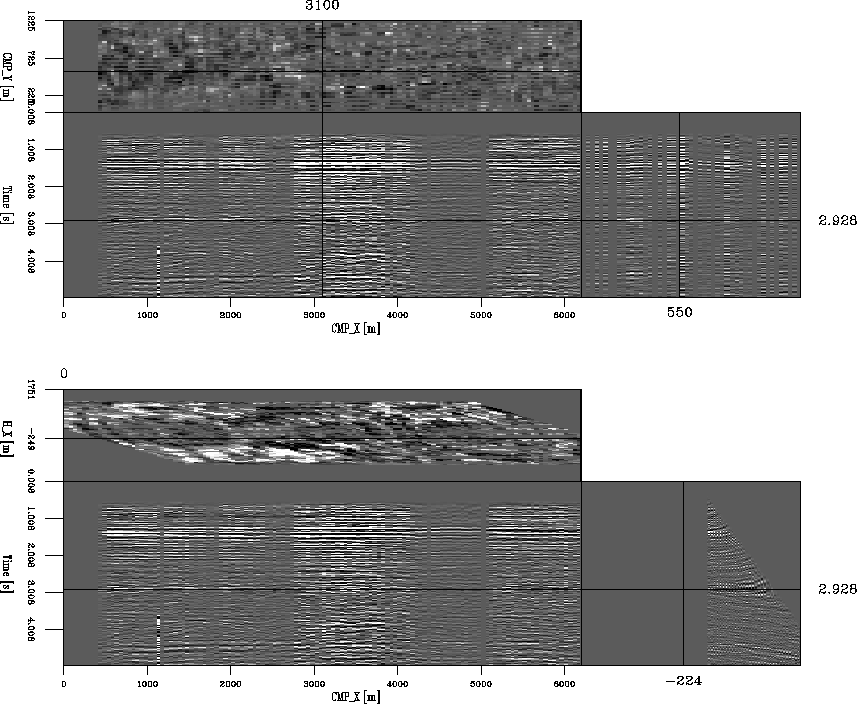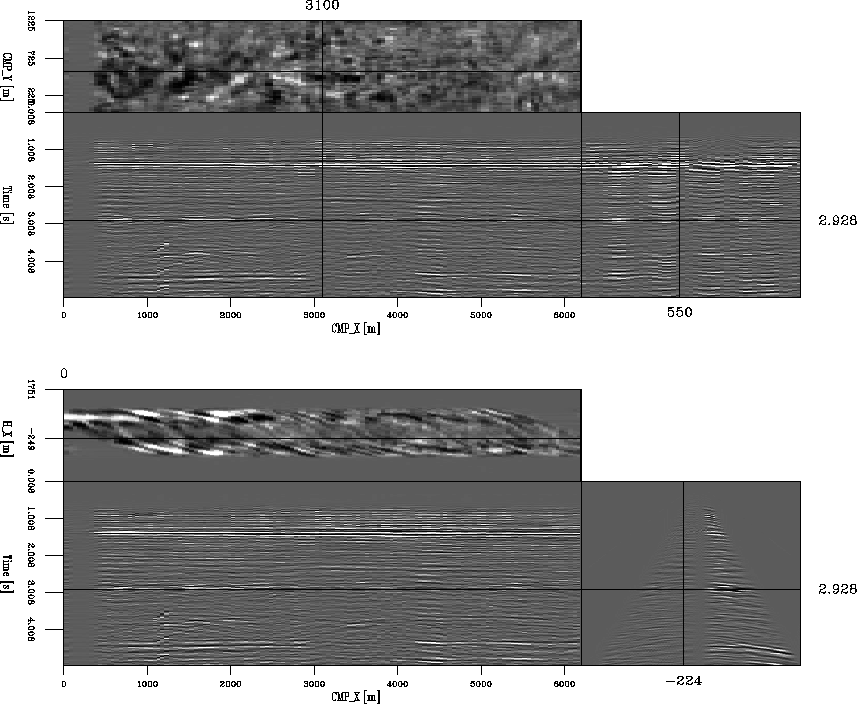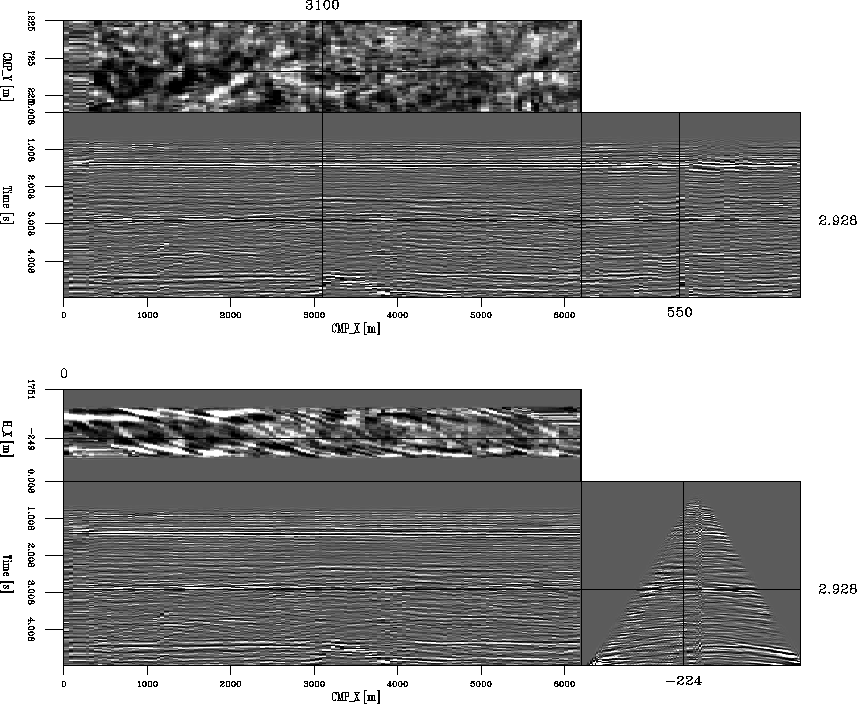 |
Figure 8 4-D common-azimuth cube. Top panel,
Figure 8 presents the conventional method result. The top panel shows the inline-CMP and crossline-CMP sections for a constant inline-offset=-224 m. The bottom panel shows the result along the inline-CMP and the inline-offset for a constant croosline-CMP=550 m.
 |
Figure 9 presents the adjoint solution (equation 15). The panels displayed are the same as in Figure 8. Notice that even after simple NMO plus stacking there are remaining holes in the regularized 4-D cube. However, the adjoint solution gives improved results really good results, since all the major acquisition gaps in the data are filled up with the information from surrounding traces thanks to the PS-AMO operator.
The ![]() sections at the top and
bottom panels on Figure 9
shows a successful interpolation. The crossline
sections at the top and
bottom panels on Figure 9
shows a successful interpolation. The crossline ![]() section
on the top panel (Figure 9) shows not only
all the acquisition gaps filled up after the
data regularization but also a horizontal displacement
on the traces, this displacement corresponds to the
CMP to CCP spatial shift correction.
Also, note that the amplitudes of the adjoint
solution are uneven along the entire 4-D cube.
section
on the top panel (Figure 9) shows not only
all the acquisition gaps filled up after the
data regularization but also a horizontal displacement
on the traces, this displacement corresponds to the
CMP to CCP spatial shift correction.
Also, note that the amplitudes of the adjoint
solution are uneven along the entire 4-D cube.
 |
Figure 10 displays the final result for this chapter, that is the weighted adjoint result, where I approximate the Hessian with a diagonal model-space weighting function. The figure shows the results as in the traditional method result and the adjoint result. The energy is balanced along the entire 4-D cube due to this approximation.
The normalized result on Figure 10 uses a reference model consisting on a diagonal matrix of one's, and the epsilon value is 0.1. This epsilon value is an order magnitude smaller than the corresponding data values. Therefore, I guarantee that the normalized result is not contaminated with artificial amplitude values. The weighted adjoint result is twice more computer expensive than the adjoint result. This raise in the cost makes the geometry regularization process approximately half of the cost of the final migration.
 |
The next chapter presents the final migration results for this dataset. I compare two migration results, the first image is using the a common-azimuth cube from the conventional method result, Figure 8. The second migration is using the common-azimuth cube of the weighted adjoint solution, Figure 10.